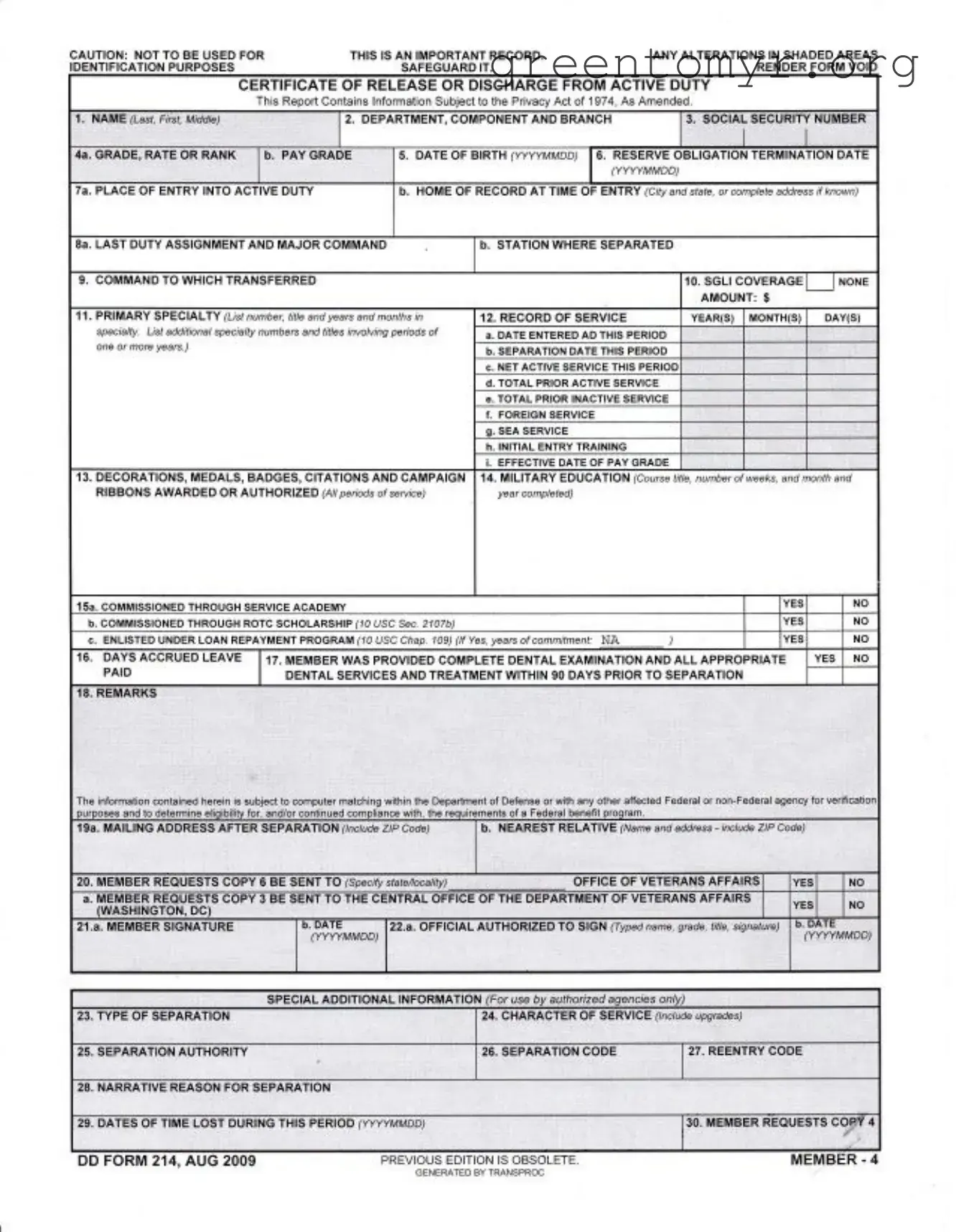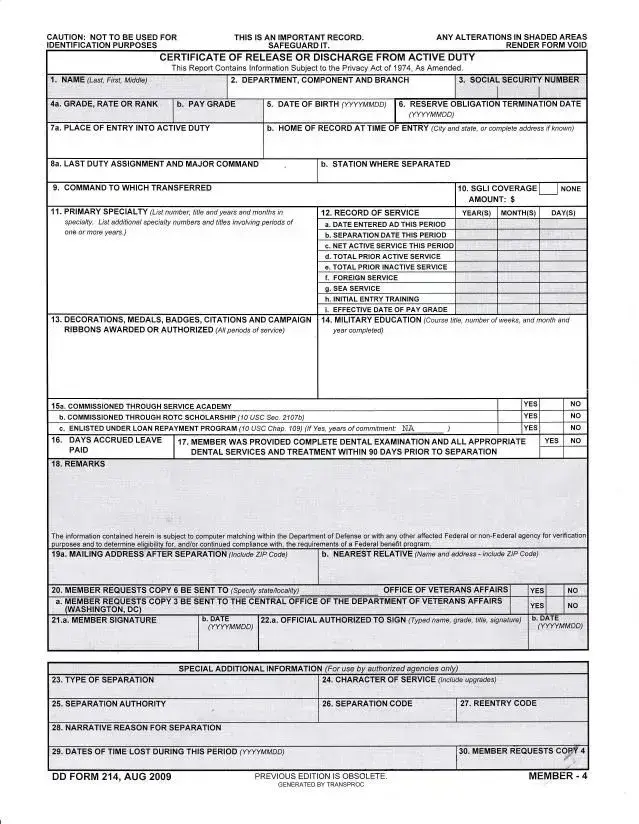Filling out the DD 214 form is a crucial task for individuals transitioning from active duty to civilian life. Yet, many make errors that can complicate this process. One common mistake involves inaccurate personal information. Names, social security numbers, and dates of birth must be entered correctly. An error in these fields can lead to significant delays in processing and can affect future benefits.
Another prevalent error occurs when individuals fail to properly complete the section regarding military education. This part is essential for showcasing training and qualifications. Incomplete or vague entries can leave a gap in the veteran's record, potentially impacting employment opportunities or educational benefits post-service.
A third mistake often involves the date of separation. Veterans sometimes miswrite this critical date, which could lead to confusion regarding eligibility for benefits or entitlements. Double-checking this date against official documentation can prevent future issues.
Additionally, many overlook the importance of filling out the military service record accurately. This includes reporting the total years, months, and days served. If this section is left blank or inaccurately filled, it may lead to challenges in verifying service length for veteran status or benefits.
Veterans may also forget to fill out the request for copies of the form itself. If individuals do not check the appropriate boxes, they could miss out on receiving important copies needed for their personal records or for applying to veteran services.
Another frequent oversight involves signing the form. Many assume that once the form is filled out, it is complete. However, an unsigned DD 214 is invalid. Taking a moment to ensure that all required signatures are in place is vital for the document's legitimacy.
Moreover, individuals sometimes neglect to provide accurate contact information for mailings after separation. Incorrect mailing addresses can result in significant delays in receiving documents, which may hinder the proper processing of benefits.
Lastly, not understanding the implications of the character of service section can be detrimental. Veterans should ensure they are aware of how their service is categorized and reflected in this section. Discrepancies can lead to complications in accessing resources and support. Recognizing these common pitfalls can facilitate a smoother transition from military to civilian life.

